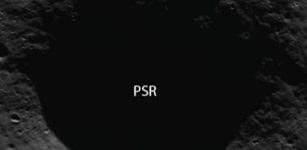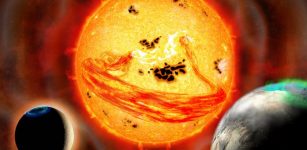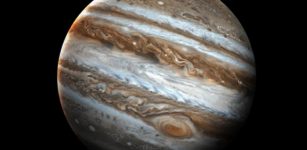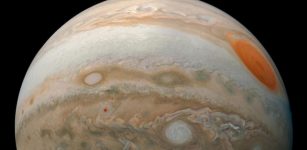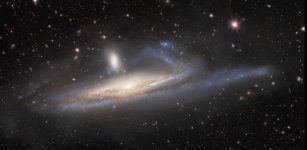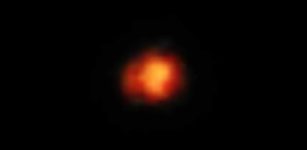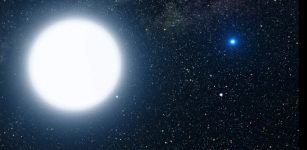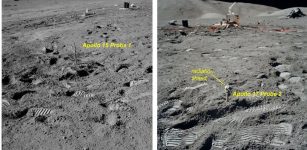Next Ten Years, We’ll See More Objects Like ‘Oumuamua – Researchers Say
Eddie Gonzales Jr. – MessageToEagle.com – On October 19, 2017, astronomers discovered the first known interstellar object to visit our solar system. Early reports of the odd characteristics of “‘Oumuamua” led to speculation that the object might be an alien spacecraft.
 Artist’s concept of ‘Oumuamua. Image credit: ESO/M. Kornmesser
Artist’s concept of ‘Oumuamua. Image credit: ESO/M. Kornmesser
A new study of an international team of 14 astronomers from the U.S. and Europe, co-led by University of Maryland Associate Research Scientist Matthew Knight, strongly indicates that the origin of “‘Oumuamua”is purely natural.
When first spotted the object defied easy description, simultaneously displaying characteristics of both a comet and an asteroid. Astronomers formally named the object 1I/2017 U1 and with a common name of ‘Oumuamua, which roughly translates to “scout” in Hawaiian.
“We have never seen anything like ‘Oumuamua in our solar system. It’s really a mystery still. But our preference is to stick with analogs we know, unless or until we find something unique. The alien spacecraft hypothesis is a fun idea, but our analysis suggests there is a whole host of natural phenomena that could explain it,” Knight said in a press release.
As Knight and his colleagues summarized in their study, ‘Oumuamua is red in color, similar to many small objects observed in our solar system. But that’s where the familiarity ends.
See also:
Interstellar Alien Object ‘Oumuamua: Which Of Four Dwarf Stars Is Its Home?
Astronomers Listen For Signs Of Intelligent Life From Unusual `Oumuamua Asteroid
‘Oumuamua With Highest Eccentricity Ever Observed, Originates From Binary Star System
Cucumber-Shaped Asteroid ‘Oumuamua’ Had A Violent Past – Researchers Say
‘Oumuamua likely has an elongated, cigarlike shape and an odd spin pattern—much like a soda bottle laying on the ground, spinning on its side. According to Knight, its motion through our solar system is particularly puzzling. While it appeared to accelerate along its trajectory—a typical feature of comets—astronomers could find no evidence of the gaseous emissions that typically create this acceleration.
“The motion of ‘Oumuamua didn’t simply follow gravity along a parabolic orbit as we would expect from an asteroid,” Knight said. “But visually, it hasn’t ever displayed any of the cometlike characteristics we’d expect. There is no discernable coma—the cloud of ice, dust and gas that surrounds active comets—nor a dust tail or gas jets.”
“We put together a strong team of experts in various different areas of work on ‘Oumuamua. This cross-pollination led to the first comprehensive analysis and the best big-picture summary to date of what we know about the object,” Knight explained. “We tend to assume that the physical processes we observe here, close to home, are universal. And we haven’t yet seen anything like ‘Oumuamua in our solar system. This thing is weird and admittedly hard to explain, but that doesn’t exclude other natural phenomena that could explain it.”
The new research paper is primarily an analysis of existing data, including of a December 2017 study of ‘Oumuamua’s shape and spin pattern co-authored by Knight and a team of UMD astronomers.
Astronomers considered a number of mechanisms by which ‘Oumuamua could have escaped from its home system. ‘Oumuamua could have been ejected by a gas giant planet orbiting another star. According to theory, Jupiter may have created the Oort cloud—a massive shell of small objects at the outer edge of our solar system—in this way. Some of those objects may have slipped past the influence of the sun’s gravity to become interstellar travelers themselves.
‘Oumuamua could be the first of many interstellar visitors. Knight is looking forward to data from the Large Synoptic Survey Telescope (LSST), which is scheduled to be operational in 2022.
“In the next 10 years, we expect to begin seeing more objects like ‘Oumuamua. The LSST will be leaps and bounds beyond any other survey we have in terms of capability to find small interstellar visitors,” Knight said. “We may start seeing a new object every year. That’s when we’ll start to know whether ‘Oumuamua is weird, or common. If we find 10-20 of these things and ‘Oumuamua still looks unusual, we’ll have to reexamine our explanations.”
Written by Eddie Gonzales Jr. – MessageToEagle.com Staff

